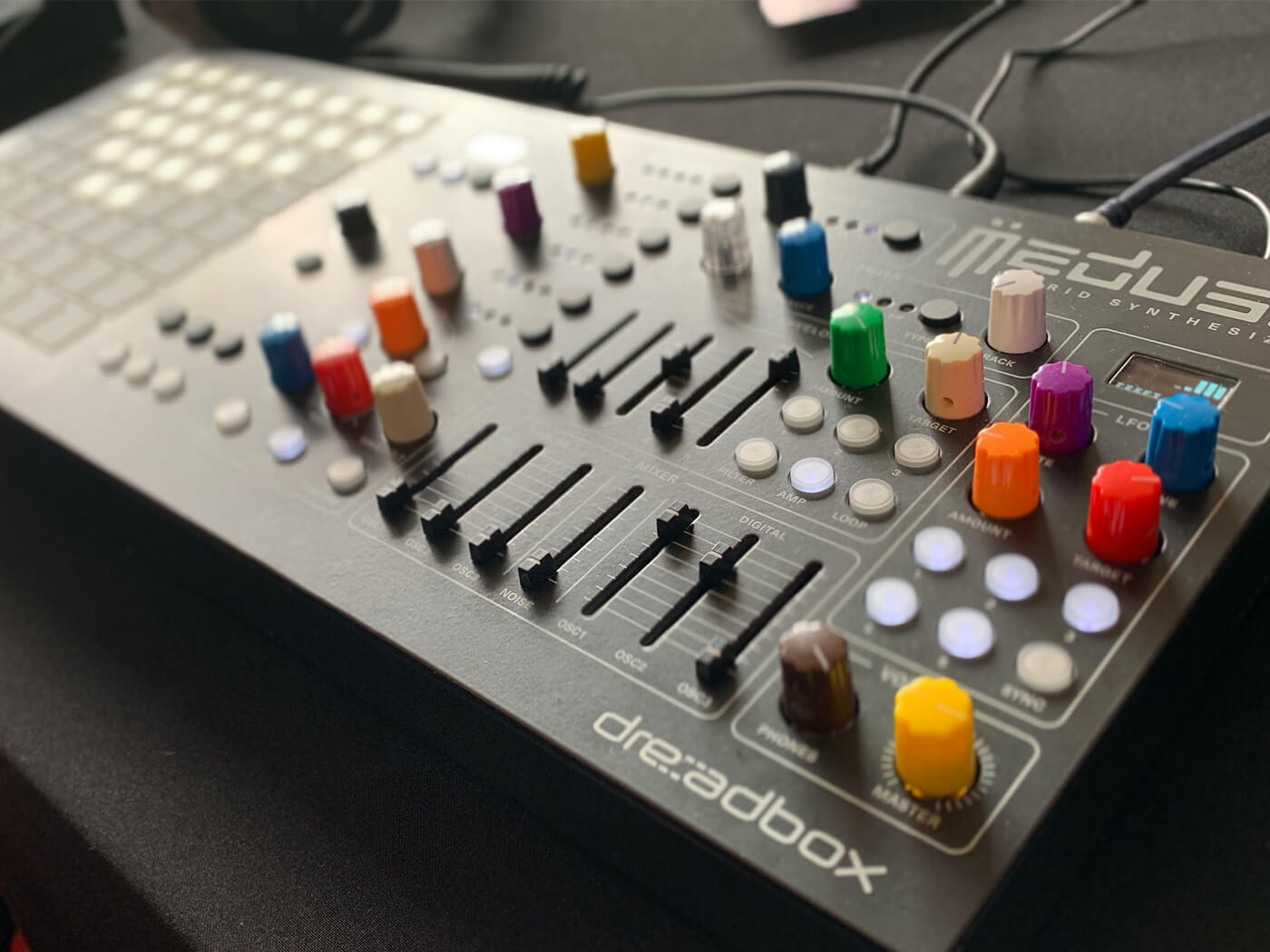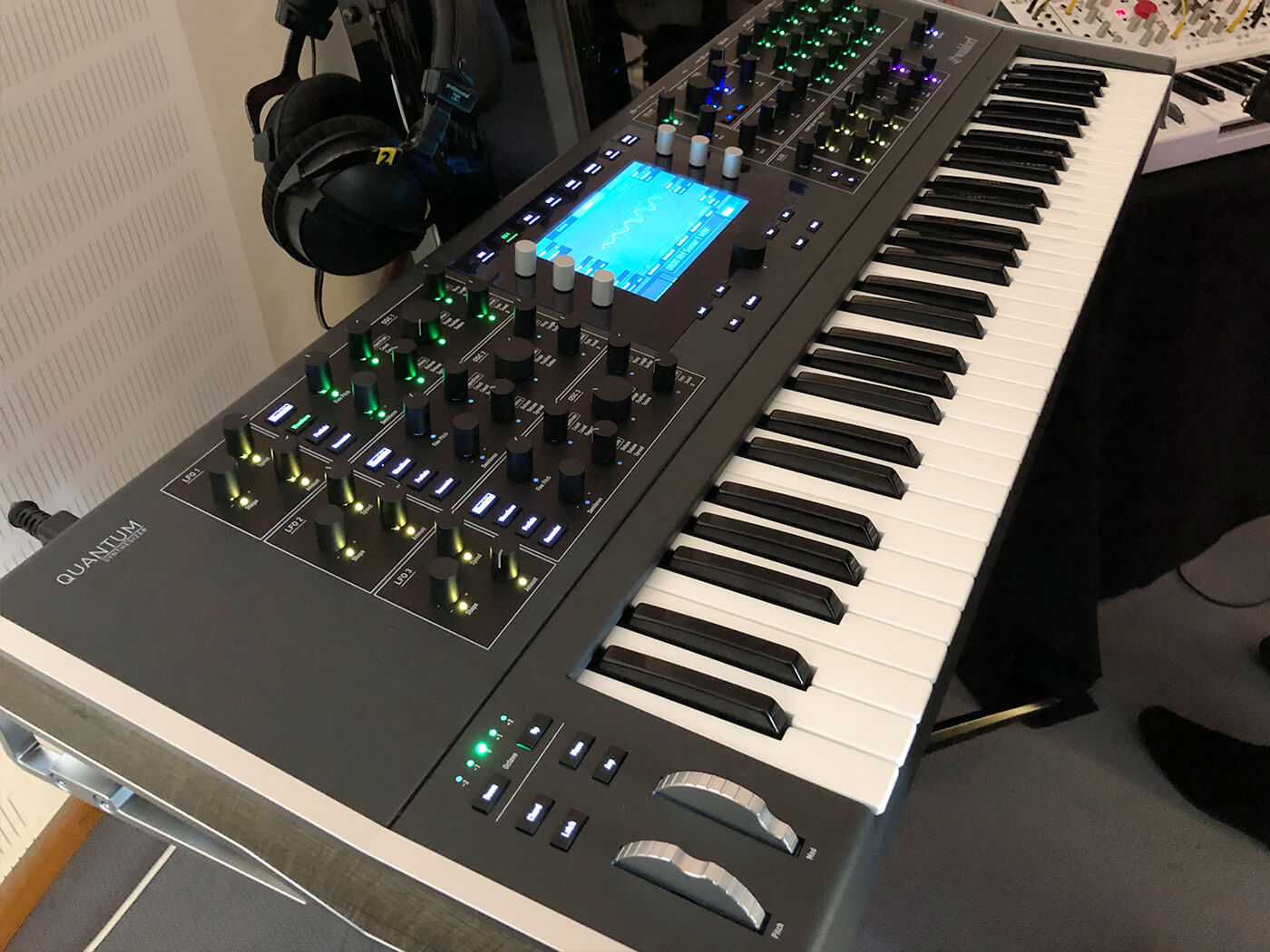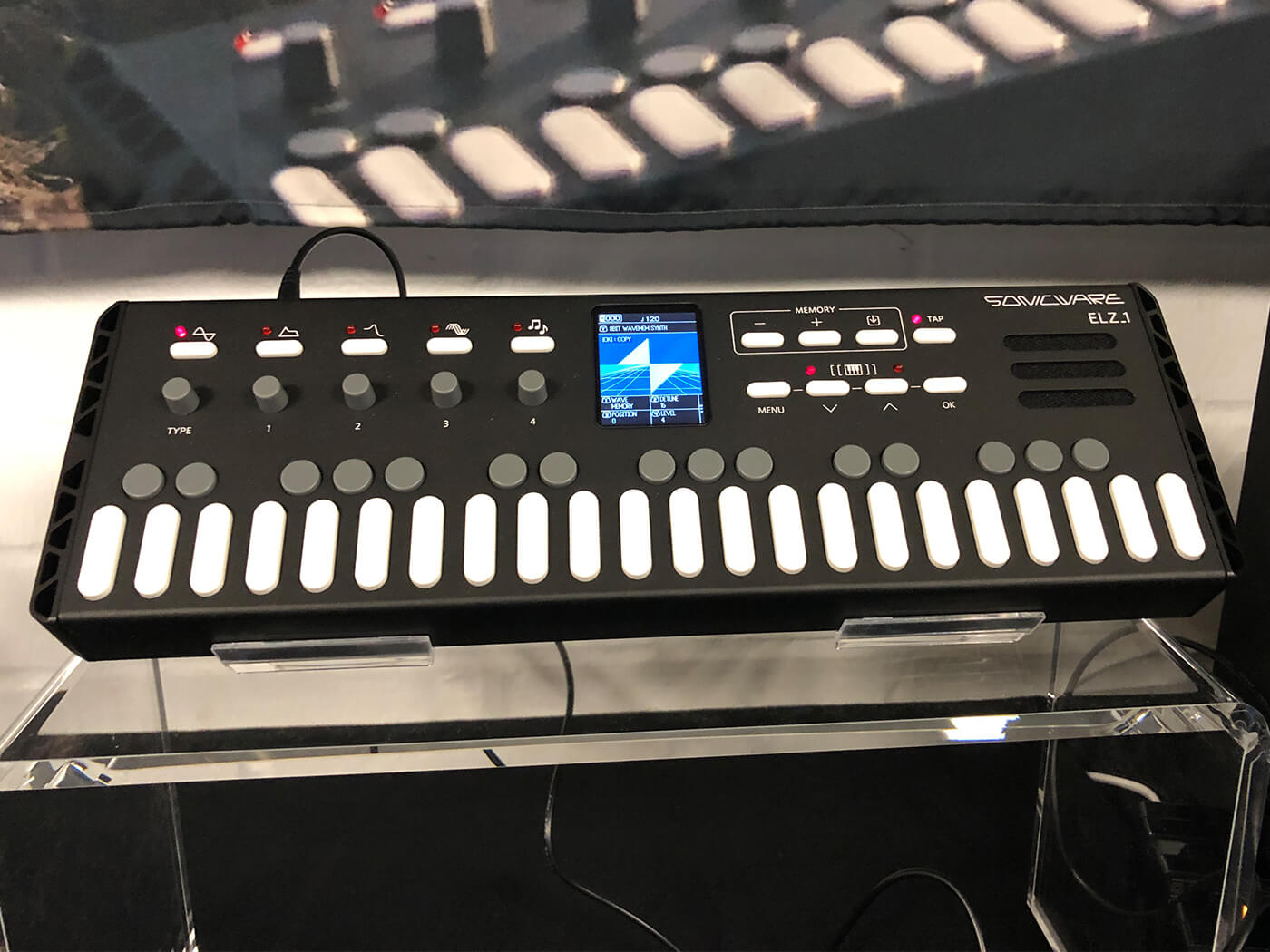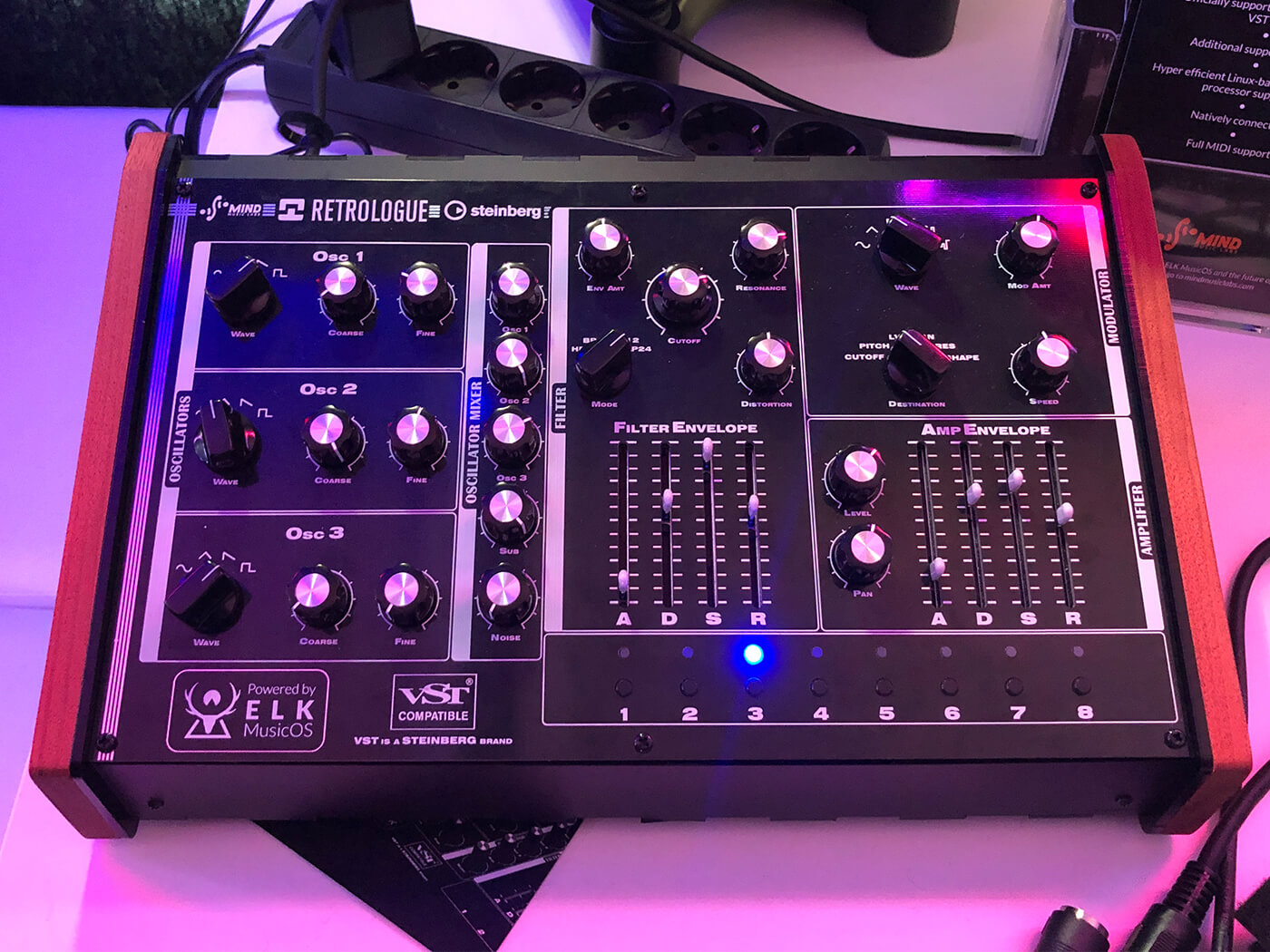10 best synths of Superbooth 2019
We’ve already given you a run-down of our top overall gear picks from Superbooth 2019. Now, we focus specifically on synths. Analogue, digital, hybrid, electro-mechanical – these are our favourites from Berlin’s annual synth summit. Polyend Deadbox Medusa 2.0 A grown-up version of Polyend’s collaboration with Dreadbox, Medusa 2.0 adds a new drone mode and greatly […]

We’ve already given you a run-down of our top overall gear picks from Superbooth 2019. Now, we focus specifically on synths. Analogue, digital, hybrid, electro-mechanical – these are our favourites from Berlin’s annual synth summit.
Polyend Deadbox Medusa 2.0
A grown-up version of Polyend’s collaboration with Dreadbox, Medusa 2.0 adds a new drone mode and greatly improves the wavetable synth engine. It also refines the Grid workflow, features an improved randomisation algorithm, has new modulation modes and presets from the likes of Machinedrum and Richard Devine. Although Medusa 2.0 has grown up, it looks more fun now thanks to the addition of coloured knobs, making navigation easier.
Superlative Instruments SB-1/SuperBee
There’s no question that Superlative Instruments’ first instrument is a reworking of the Roland SH-101, but what the fledgeling company is aiming to do is bring it into the modern era. An analogue synth with a rechargeable, replaceable battery, and a new fast and responsive keybed based on rubber dome switches, this is one to watch for 2019.
Novation Summit
The 61-key, 16-voice Summit polysynth is much more than just two Peak synths in a single unit. It also takes the keybed from the SL MkIII controller keyboard, features expanded front panel controls, and adds useful keyboard splitting and patch layering options.
On top of that, the filter is a flexible number, switchable between six paired combinations of low-pass, high-pass and band-pass modes. Designed by legendary synth designer Chris Huggett, it’s essentially the filter from the iconic 1980s British synth, the OSCar. This can also be used to shape an audio input giving you more sonic options.
Moog Matriarch
Though not technically launched at Superbooth, Moog’s Matriarch was getting its first European tradeshow outing at the Berlin event. Featuring four notes of polyphony, a stereo filter, a digital delay and semi-modular patch points, the Matriarch earns its name. At $2000, this is a premium synth, but it manages to be both immediately understandable while retaining the complexity of a modular.
U.D.O Super 6
Billed as a 12-voice binaural polysynth, the Super 6 from new British company U.D.O. is designed for the less patient player, with an elegant and simple control layout. Although it uses high-resolution FPGA waveforms as its oscillation sources, the rest of the instrument is fully analogue, and it sounds wide and lush. Hear it in action and get more info as we talk to the Super 6’s designer George Hearn.
Gamechanger Audio Motor Synth
This truly unusual eight-voice electro-mechanical synth sports eight digitally controlled electric motors, each generating oscillations through inductance. The sound is singular; it turns out that using motors gives it a characteristic car-like revving sound quality as well. It’s also a visual spectacle to watch.
Waldorf Quantum (Version 2 OS)

The Waldorf flagship is getting a wholly refined OS and we got a glimpse of it at the show. This update will see DX-style FM synthesis and will incorporate the Vision 4 instruments Kernel synthesis engine, which combines 6 audio kernels (effectively oscillators) as a single sound source. Each kernel has its own bespoke envelope, panning, velocity, level, pitch and more, which are modifiable via a modulation matrix.
Sonicware ELZ.1

Both a synth and a mobile sound design tool, the ELZ.1 sports a powerful digital synthesis engine with 9 different synthesis types. It’s also playable as a polyphonic instrument with up to six voices. One of the ELZ.1’s most attractive features is the ability to dial in external instruments and gear to explore sound mangling and manipulation using the diminutive synth. It can also run on AA batteries, making it a back-packable, ultra-portable tool.
Mind Music Labs/Steinberg RetroLogue 2

Steinberg is the first company to have announced a VST instrument brought to life in hardware using the ELK platform from Mind Music Labs. They were showing off this hardware recreation of their much-loved softsynth at Superbooth.
Interestingly, the ELK platform is entirely adaptable depending on the needs of the developer. For example, you can make the case look any way you want, and have any controls you so desire, and also take advantage of sub-millisecond round-trip latency. This makes ELK an attractive platform for software developers wanting to dip a toe into the world of hardware. So, while Steinberg and Propellerhead were the only software partners by the time Superbooth started (ELK also runs Rack Extensions), we suspect many more developers will get involved over time.
Korg Nubass
This little acid bass machine is the first analogue synth to use a miniaturised Nutube valve. So your squelches will be richer, your distortion thicker and your harmonics warmer claims Korg. When you consider this tiny synth sports a ladder filter, a 16-step sequencer and a guitar pedal-inspired analogue overdrive section the $199.99 asking price seems entirely reasonable.